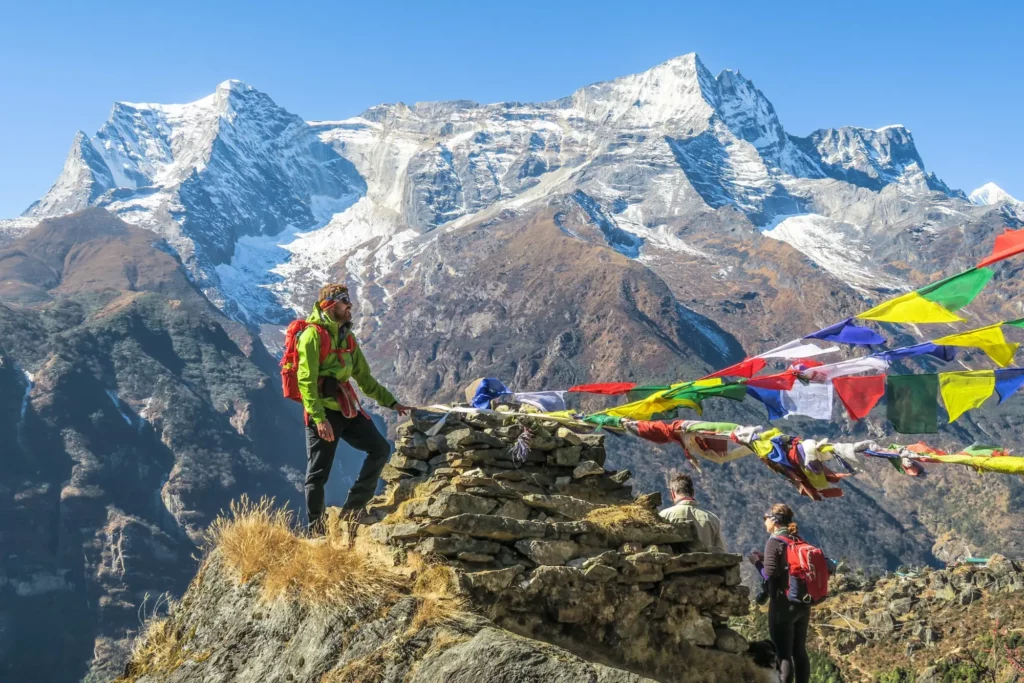
Helpful tips for preparing your first trekking in Nepal
If you love the mountains, enjoy spending time in beautiful sceneries and are up for a physical challenge, coming to Nepal and planning a trekking is a great decision. However, hiking in Nepal might be different from what you’re used to by hiking in the Alps in Europe or the Rocky’s in America. That’s why in this blog we give you some useful tips to help you prepare yourself for your first trekking in Nepal.
Nepal is heaven for mountaineers, hikers and adventurers, being home to some of the highest peaks in the world. No wonder more than 150.000 trekkers come to Nepal each year and walk among giants. But how do you prepare yourself for trekking in Nepal? And how do you even decide which area to visit? Let us help you!
Famous treks or off-the-beaten-track experiences?
Chances are you’ve heard about famous treks in Nepal, like the trek to Everest Base Camp, Annapurna Base Camp and Annapurna Circuit. While we love going on these treks, we love it even more to show you the unexplored areas. And there are a lot!
Which trekking we’d recommend for you to do, depends on a number of things. First, the duration of your stay in Nepal and the number of days you want to hike. Second, your physical ability. If you’re an experienced hiker, you could opt for a more challenging hike. But if you’re a beginner, it’s often better to start off with an easier hike.
Which trekking best suits your wishes, also depends on what you want to see or experience during the trek. Some areas are known for their cultural heritage or old villages, while others mostly offer spectacular views but lack in the cultural department. Don’t worry, we will help you decide! Just send us an email and let us know what you’d like to do during your time in Nepal.
Trekking in Nepal: with or without guide and/or porters?
In an earlier blog, we’ve touched upon the topic of trekking with a guide and how to find a good one. But first, you’ll have to decide if you want to hike with a guide. In most cases, we’d recommend you do. A guide is very helpful for a number of reasons. First, he or she knows the area and makes sure you stay safe during the trekking. (For instance, good guides know the symptoms of altitude sickness.) Second, a guide can talk to locals, walk around in the kitchen of teahouses and advise you on what not to eat during the hike. Last but not least, a guide knows what to do in case of an emergency and can get help as quickly as possible.
If you’re bringing a heavy backpack or you aren’t as fit as you’d like to be, you might consider getting a porter too. Porters can make your trekking experience in the Nepali mountains far more enjoyable. If you’re carrying a bag that’s over 10kgs, it’s hard to enjoy that beautiful scenery around you.
Right, now that we’ve mentioned the two most important things, let’s focus on things you can do to prepare your first trekking in Nepal.
Be prepared for ever-changing weather …
Weather in the mountains can be fickle at best. That’s why you need to prepare for all sorts of weather when you go trekking in the Nepali mountains. Make sure to pack several layers of clothes and don’t forget to bring a hat and gloves. If you don’t have all this gear at home, you can find everything you need in one of the many shops in Kathmandu.
Some stuff, like a sleeping bag or trekking poles, can be rented as well. We do recommend buying a pair of sturdy trekking boots and breaking them in well before the trekking starts to prevent annoying problems like blisters.
Trekking in Nepal means going back to basics
During trekking in Nepal, you’re really going back to basics. This means you could be sleeping on uncomfortable mattresses in small (sometimes shared) rooms, eat the same food every day and not showering for the duration of your trek. While some people really don’t care about these things, we’ve learned that it’s better to be straightforward about the conditions during a mountain trek.
At some teahouses, you can charge your phone or camera, but don’t count on it! The power often goes down and no one knows when it will work again. The same thing goes for wifi. While some teahouses offer wifi (you’ll have to pay for it), it barely works most of the time. Having a guide can come in handy here, as he or she can ask if the wifi works before you pay. 😉
Get your cash upfront
You won’t find an ATM during most treks, so it is wise to take enough cash to last during the trek. How much you need to bring, really depends on the choices you made earlier. If you’ve booked an all-inclusive trek, your beds, meals, and transportation are paid for by your guide. You might need some money to buy snacks during the day, get wifi or charge your devices or buy an extra meal in the teahouse (yes, second dinners and breakfasts do happen). 🙂
However, if you’ve opted for a ‘guide-only’, you’ll have to pay the teahouses for the accommodation and three meals a day. As well as the car that drops you at your starting point and picks you up when you’re done trekking.
Are you thinking about planning your first trekking in Nepal? We’d love to help you out! Send us an email or message us on Facebook or Instagram for more information.







